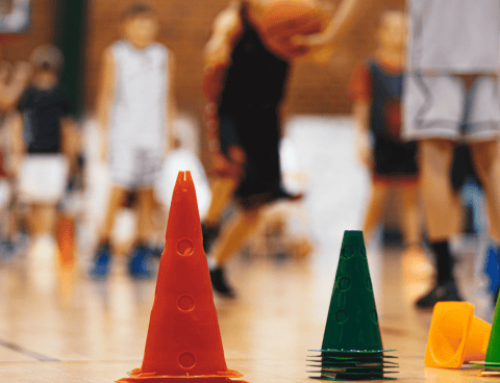Tracking Trends In the NCAA Transfer Portal
In April, the NCAA released a look at trends in the transfer portal that provided a glimpse at how athletes in just about every sport utilized the portal. While the data covered only the 2019-20 and 2020-21 academic years and was current as of July 31, 2021, it did include the first few months of the availability of the one-time transfer exception, which went into effect in April of 2021. While that ruling created a notable jump in transfer activity in 2021, there were still plenty of other significant trends to be found in the data.
Not Everyone Who Enters The Portal Comes Out The Other Side
While the big-name athletes get much of the attention when they enter the transfer portal, the overall results paint a less encouraging picture of the final outcomes. In fact, only 49% of student-athletes who entered the portal emerged at another NCAA school. Of the remainder, 43% remained active in the transfer portal, meaning they’re still looking for a new school, transferred to a non-NCAA school, or left their sport entirely. The remaining percentage was removed or withdrawn from the transfer portal and are assumed to have stayed at their original school.
To narrow the data down by sport, in football, 54% of the players entering the portal enrolled at a new school while 41% remained in portal limbo. In men’s basketball, 65% landed at a new school, with only 29% of the players who entered the portal not finding another opportunity.
On the women’s side, 65% of basketball transfers were reported at new schools, while 32% stayed active in the portal. For women’s soccer, 55% successfully transferred to a new program, while 40% continued in the portal in search of a new opportunity. For softball, the numbers were almost identical to soccer, with 55% of portal transfers finding a new school and 39% still in the portal.
Another Athletic Scholarship Isn’t Guaranteed
Entering the transfer portal as a scholarship athlete doesn’t mean you’ll emerge with one. Though 50% of the student-athletes with some form of athletic scholarship received some form of aid upon transferring, 11% of those who entered the transfer portal wound up at another school without any athletic aid. In the middle of those two groups were the 39% of student-athletes with an athletic scholarship who are still in the portal while looking for a new school.
Division I Leads The Way
Of all those student-athletes who entered the transfer portal in 2020 and 2021, 76% moved to a Division I program, either from another DI school or a lower division. Division II schools were the destination for 24% of those in the portal, while Division III athletes (who don’t receive athletic scholarships) comprised the other 2% of the transfers.
There’s Mixed News For Walk-Ons
The NCAA data showed that 62% of walk-ons in the transfer portal (those defined as “unaided at departing school”) remained active in the portal and did not enroll in another school. That’s the bad news. The good news is that 18% of walk-ons who opted into the transfer portal landed some scholarship aid at their new school. An almost equal amount (20%) landed walk-on spots at new schools.
Who’s Moving The Most And Who’s Moving Least?
For both men and women, more basketball players moved by percentage than any other sport, with 31% of all male players and 22% of females entering the transfer portal in the 2019-20 and 2020-21 seasons. On the other end of the spectrum, only 2% of rowers transferred, and 4% of field hockey players entered the portal in search of a new school. Sports with fewer than 50 portal entrants in 2021 were not included in the data.
What The Data Doesn’t Reflect
While the data released by the NCAA did highlight the effects of the early stages of the one-time transfer exception, it’s expected that data released in subsequent years will show even more student-athletes entering the portal. In addition, the new rules allowing name, image, and likeness (NIL) deals are expected to push more athletes into the transfer portal, as some athletes search for not only a better situation athletically but a better financial opportunity as well.
In addition, the current round of conference realignment will likely increase transfer portal opt-ins, as some student-athletes may opt to pursue opportunities on bigger stages. Finally, many recruiting experts believe the NCAA’s lifting of the 25 per-year scholarship limit for Football Bowl Subdivision (FBS) will push more current student-athletes into the transfer portal should coaches choose to go in a different direction in how they assemble their teams (such as pushing out current student-athletes to make room for younger players with greater potential).
The Takeaway
Since the data in the NCAA portal is already a year old, we know all the elements mentioned above (NILs, no 25-scholarship-per-year cap, one-time transfer exception) will likely spur more activity in the future. Beyond that, the only certainty about the transfer portal is that it will continue to resemble an average NCAA roster. Which is to say, the only constant will be change.
RECOMMENDED FOR YOU
MOST POPULAR
Tracking Trends In the NCAA Transfer Portal
In April, the NCAA released a look at trends in the transfer portal that provided a glimpse at how athletes in just about every sport utilized the portal. While the data covered only the 2019-20 and 2020-21 academic years and was current as of July 31, 2021, it did include the first few months of the availability of the one-time transfer exception, which went into effect in April of 2021. While that ruling created a notable jump in transfer activity in 2021, there were still plenty of other significant trends to be found in the data.
Not Everyone Who Enters The Portal Comes Out The Other Side
While the big-name athletes get much of the attention when they enter the transfer portal, the overall results paint a less encouraging picture of the final outcomes. In fact, only 49% of student-athletes who entered the portal emerged at another NCAA school. Of the remainder, 43% remained active in the transfer portal, meaning they’re still looking for a new school, transferred to a non-NCAA school, or left their sport entirely. The remaining percentage was removed or withdrawn from the transfer portal and are assumed to have stayed at their original school.
To narrow the data down by sport, in football, 54% of the players entering the portal enrolled at a new school while 41% remained in portal limbo. In men’s basketball, 65% landed at a new school, with only 29% of the players who entered the portal not finding another opportunity.
On the women’s side, 65% of basketball transfers were reported at new schools, while 32% stayed active in the portal. For women’s soccer, 55% successfully transferred to a new program, while 40% continued in the portal in search of a new opportunity. For softball, the numbers were almost identical to soccer, with 55% of portal transfers finding a new school and 39% still in the portal.
Another Athletic Scholarship Isn’t Guaranteed
Entering the transfer portal as a scholarship athlete doesn’t mean you’ll emerge with one. Though 50% of the student-athletes with some form of athletic scholarship received some form of aid upon transferring, 11% of those who entered the transfer portal wound up at another school without any athletic aid. In the middle of those two groups were the 39% of student-athletes with an athletic scholarship who are still in the portal while looking for a new school.
Division I Leads The Way
Of all those student-athletes who entered the transfer portal in 2020 and 2021, 76% moved to a Division I program, either from another DI school or a lower division. Division II schools were the destination for 24% of those in the portal, while Division III athletes (who don’t receive athletic scholarships) comprised the other 2% of the transfers.
There’s Mixed News For Walk-Ons
The NCAA data showed that 62% of walk-ons in the transfer portal (those defined as “unaided at departing school”) remained active in the portal and did not enroll in another school. That’s the bad news. The good news is that 18% of walk-ons who opted into the transfer portal landed some scholarship aid at their new school. An almost equal amount (20%) landed walk-on spots at new schools.
Who’s Moving The Most And Who’s Moving Least?
For both men and women, more basketball players moved by percentage than any other sport, with 31% of all male players and 22% of females entering the transfer portal in the 2019-20 and 2020-21 seasons. On the other end of the spectrum, only 2% of rowers transferred, and 4% of field hockey players entered the portal in search of a new school. Sports with fewer than 50 portal entrants in 2021 were not included in the data.
What The Data Doesn’t Reflect
While the data released by the NCAA did highlight the effects of the early stages of the one-time transfer exception, it’s expected that data released in subsequent years will show even more student-athletes entering the portal. In addition, the new rules allowing name, image, and likeness (NIL) deals are expected to push more athletes into the transfer portal, as some athletes search for not only a better situation athletically but a better financial opportunity as well.
In addition, the current round of conference realignment will likely increase transfer portal opt-ins, as some student-athletes may opt to pursue opportunities on bigger stages. Finally, many recruiting experts believe the NCAA’s lifting of the 25 per-year scholarship limit for Football Bowl Subdivision (FBS) will push more current student-athletes into the transfer portal should coaches choose to go in a different direction in how they assemble their teams (such as pushing out current student-athletes to make room for younger players with greater potential).
The Takeaway
Since the data in the NCAA portal is already a year old, we know all the elements mentioned above (NILs, no 25-scholarship-per-year cap, one-time transfer exception) will likely spur more activity in the future. Beyond that, the only certainty about the transfer portal is that it will continue to resemble an average NCAA roster. Which is to say, the only constant will be change.











